|
|
Visit Nan Yao Temple-Beginning of the pilgrimage parade~~~
From the newspaper, we learned that the Nan Yao Temple of Changhua
City has been established for three hundred years and that it also has ten
branches throughout Changhua City, Taichung City, and Nantou County. This year,
in 2012, in the hope to promote the faith of the holy mother, a grand
pilgrimage parade lasting 14days consisting of the ten branches will take place
from November 25 to December 8. Our teacher decided to take us on an
educational trip and let us experience the Matzu pilgrimage parade.
On December 7th our
school principal and Director Yao-chung graciously drove us to the Shun Tian Temple of Wurih
district, Taichung City. We waited for the coming of Matzu. After one hour we
heard the sound of gongs and drums and also the booming fire crackers. It
wasn¡¦t long until we saw a long line of different kinds of din tao and statues
of Matzu. Each statue rode in different holy palanquins. Some yi ge took the
form of a boat and some to the form of a palace. Then all parade moved
gradually toward Shun Tian Temple. Along the two sides of the street, residents
prepared fruits and burned incenses to worship the goddess. We would cover our ears at one time and put
our hands together to worship another time. Finally we followed the parade into
Shun Tian Temple to worship. Through this visit we saw all kinds of holy palanquins
and we also learned the proceedings of a pilgrimage parade.
The Pilgrimage Parade Consisted of Five rituals:
|
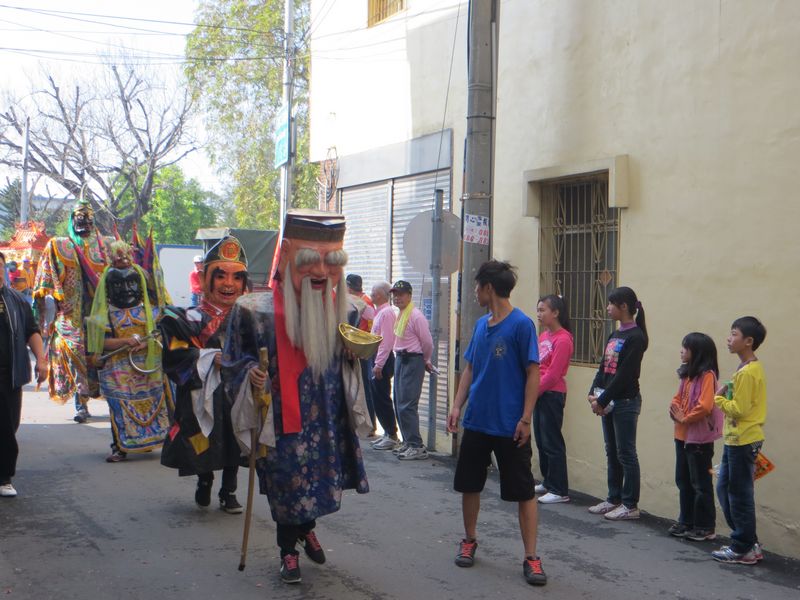
|
Din
Tao
"Din Tao" played an important role in
Taiwanese folk religion. In the early agricultural society, it is a ritual used
for important events and to thank the blessing of the god. The vibrant
performance of the Din tao is also an important entertainment to the simple
lives of the agricultural society. The traditional yi din originated from "Bai
Xi". During the Ming and Qing Dynasty our ancestors crossed the sea to Taiwan,
and brought with them the art of the folk yi din. Through four hundred years of change, the
various yi din not only reserved the spirit of traditional cultural, but also
presented the beauty of our local culture.
|
|
Guo Huo
Guohuo is a purification ritual commonly seen in
Taiwan. Through fire, the gods renew their power and their authority is
fortified. Believers can get rid of their bad lucks. Since guohuo is an
extremely dangerous folk ritual, preparation prior to the ritual is crucial.
Before guohuo one must shi fa and le fu to secure fire safety of the site. This
act can also stabilize the believers emotionally and also help them overcome
fear.
|
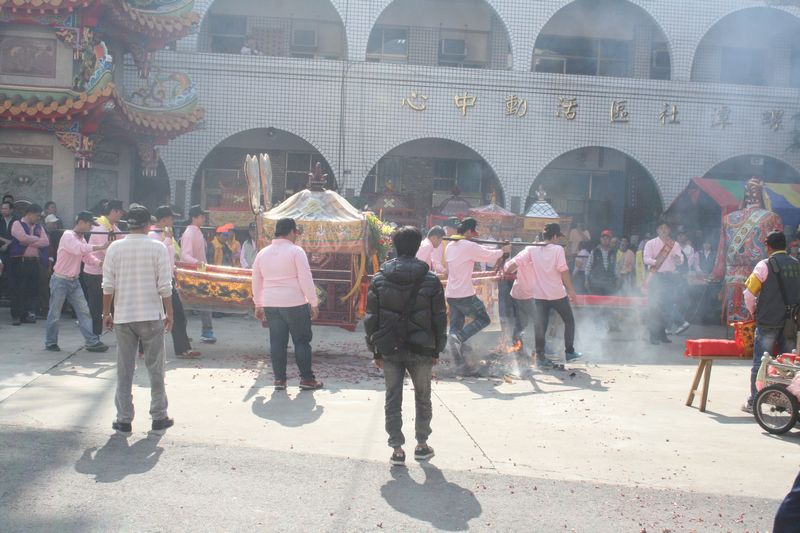
|
|
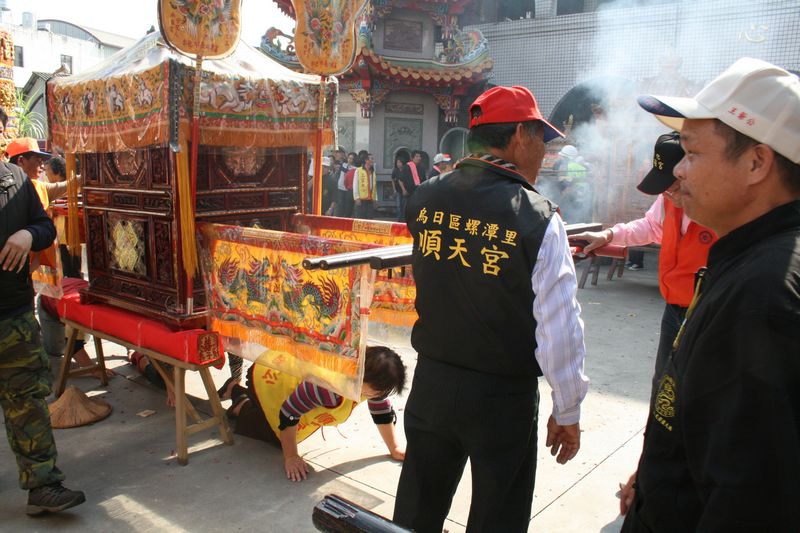
|
Go
Under the Palanquin
In Taiwanese culture, people believe that the act of going under the
palanquin will get rid of bad luck and bring good fortune. Therefore, during
pilgrimage parades one cannot only see believers who hold incense to worship,
but also people who kneeled on the ground to have the palanquin pass over their
body. When the holy palanquin stops, some would also crawl through the bottom
of the palanquin. This is worshiping method is called, "zuan jiao jiao".
|
|
Zhu Jiao
The holy palanquin paraded around the streets of Wurih City and didn't
enter Shun Tian Temple until twelve thirty in the afternoon. Once the statue of
Matzu is positioned on the throne, the Zhu jia ceremony starts. At the lead of
the temple chairman the believers chanted luo ma jing and shu wen. They
reported to Matzu that they've safely arrived at the temple and thanked her for
protecting them throughout the entire parade.
|
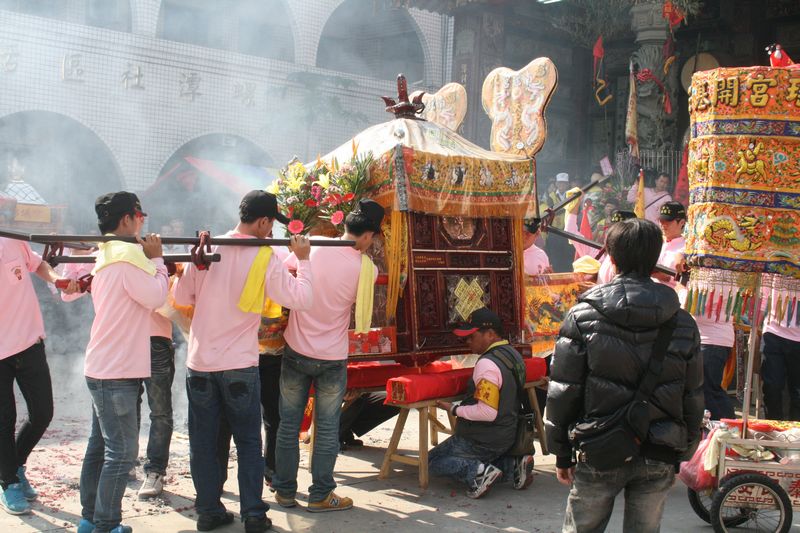
|
|
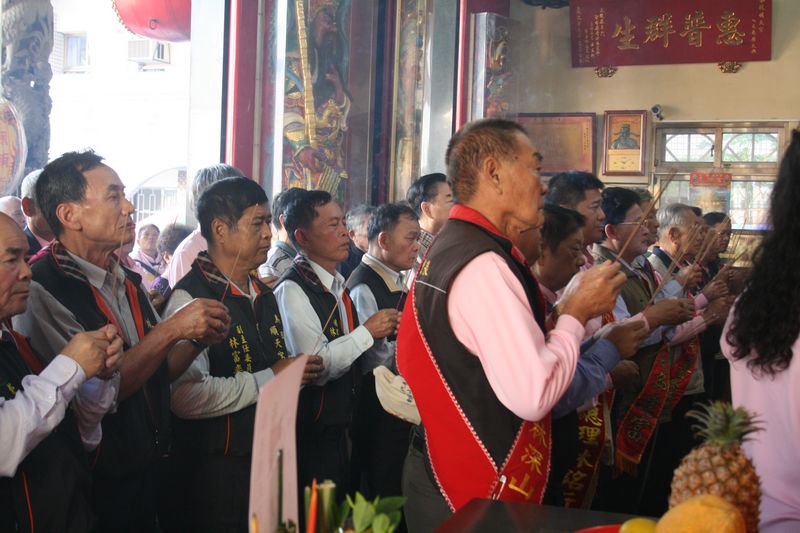
|
Palanquin Leaving Ceremony
Before
the holy palanquin takes off, all the gongs, drums, and flutes went off
together. At the lead of the temple chairman all believers worshiped the
heavenly mother with incenses in their hands, and politely ask Matzu go on her
next destination and pray that she would protect all who followed her through the
pilgrimage parade.
|
|

